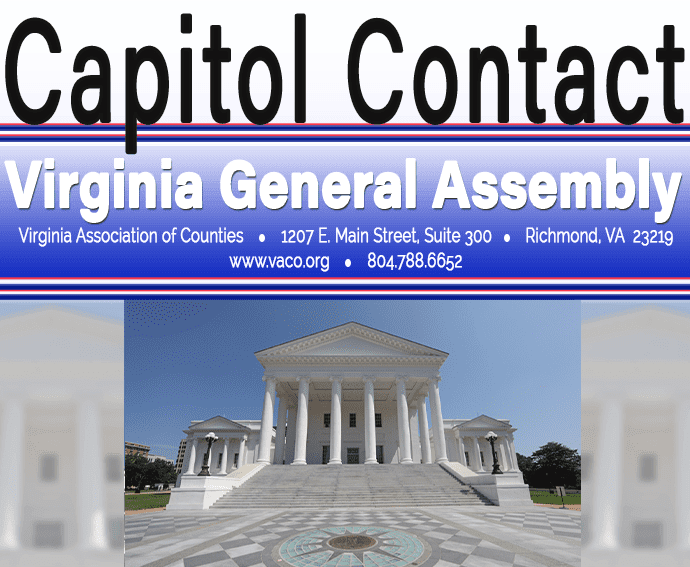Following the eye-opening report on Virginia’s K-12 Funding Formula released in July 2023 by the Joint Legislative Audit and Review Commission (JLARC), several pieces of legislation were introduced by legislators seeking to codify many of the report’s recommendations. From the Senate, most of the bills originating in that chamber related to the JLARC report have been incorporated into one “omnibus” legislative vehicle, SB 105 (Lucas), which passed the Senate unanimously. In the House, several standalone bills have crossed over to the Senate. VACo supports and has testified on any legislative effort that provides additional state support for K-12 education and requires the state to fund their share of the true cost of education.
SB 105 incorporates SB 127 (VanValkenburg), SB 128 (VanValkenburg), SB 187 (Subramanyam), SB 227 (Hashmi), SB 228 (Hashmi), and SB 609 (Aird). The bill in its current form codifies the At-Risk Add-On Program that provides additional state funding for high-poverty schools with a maximum of up to 36% more funding per student based on the concentration of poverty in an eligible school. The bill provides changes to the teacher incentive reward programs and eligibility.
SB 272 (Hashmi), which passed the Senate on a unanimous vote, would require the Virginia Department of Education (VDOE) to develop and implement a data collection process related to English language learner expenditures and student English proficiency levels and identify other options to support English language learners. The Department shall provide a status report to the Joint Subcommittee on Elementary and Secondary Education Funding on its implementation and data collection efforts by September 1, 2024.
Regarding bills from the House, HB 624 (Rasoul) passed on a vote of 85-14 and codifies the At-Risk Add-On Program in manner similar to SB 105, as well as requires state funding, pursuant to the general appropriation act to support ratios of instructional positions to English language learner students, based on each student’s English proficiency level, as established in the general appropriation act, among other provisions. HB 825 (Cousins), which passed the House on a vote of 55-44, also codifies the At-Risk Add-On Program in manner similar to HB 624, among other provisions. HB 1247 (Maldonado) passed the House on a vote of 58-41 and would implement the instructional positions for English language learners in a manner identical to HB 624.
HB 360 (Simonds) passed the House on a unanimous vote and would require the Superintendent of Public Instruction to biennially calculate, compare, and report to the Board of Education and the General Assembly the differences between the fixed staffing ratios in the Standards of Quality funding formula and the actual staffing ratios in local school divisions in the Commonwealth so that such fixed staffing ratios can be regularly adjusted as needed to more closely approximate such actual staffing ratios.
HJ 67 (Simonds) passed the House on a unanimous block vote. The bill would establish a joint committee consisting of members of the House Education Committee and members of the Senate Education and Health Committee to study fair school funding reform by, among other things, identifying and commissioning an independent firm with certain qualifications to produce an adequacy cost study on Virginia’s K-12 public schools and utilizing the findings from such study, the recommendations from the Joint Legislative Audit and Review Commission in its July 2023 report, “Virginia’s K-12 Funding Formula,” and any stakeholder input and feedback received by the joint committee to produce and submit to the Governor and the Chairmen of the House Committee on Appropriations and the Senate Committee on Finance and Appropriations by November 1, 2025, a set of recommendations on transitioning Virginia’s K-12 funding system to one that is student need-based.
As previously reported, JLARC’s findings confirm what many in local government already know to be true:
- The State Standards of Quality (SOQ) formula yields substantially less funding than actual local school division spending and benchmarks.
- Total statewide staffing needs calculated by SOQ formula are less than actual employment levels.
- The SOQ formula systematically underestimates division compensation costs.
- The formula still uses Great Recession-era cost reduction measures.
- The formula does not adequately account for higher needs students.
- The formula does not adequately account for local labor costs, among other findings.
VACo will continue to engage and report on this legislation as it progresses through the General Assembly. Many of the provisions contained in the legislation will be dependent upon budget language.
VACo Contact: Jeremy R. Bennett

